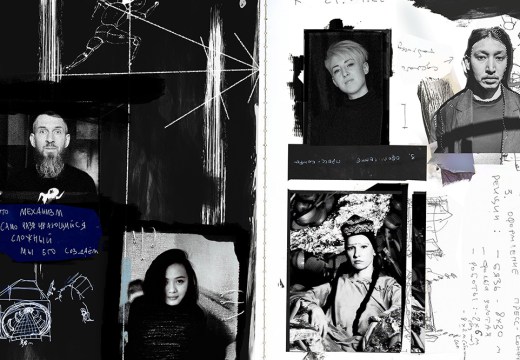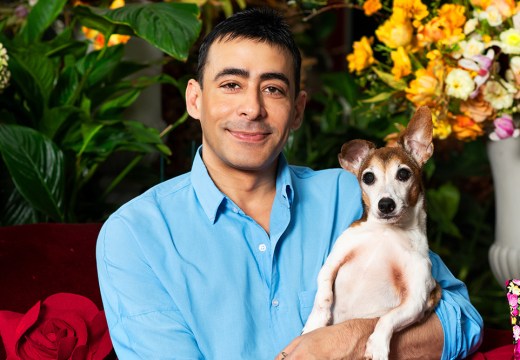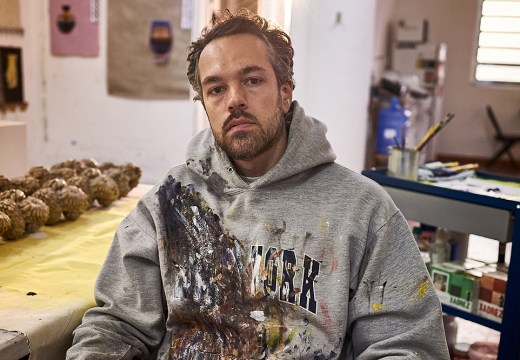Working across film, video, photography, performance and installation, the American artist Amie Siegel poses unsettling questions about class and labour within the art world, especially regarding the ownership of cultural heritage and the systems we use to value artworks. Her latest moving-image work, ‘Bloodlines’, traces the movement of paintings by English artist George Stubbs (1724–1806) as they go on loan, from private country houses to a public art gallery and back again. ‘I am really interested in things that have this concatenated quality of ripple effects moving outward as they circulate. It’s not just the trajectory of circulation, but the layers of circulation,’ she has said. The work was commissioned by the National Galleries of Scotland in Edinburgh, and is currently on display as part of an exhibition of recent acquisitions at the Scottish National Gallery of Modern Art until 4 September; it is also on show as part of a solo exhibition at Thomas Dane Gallery in London until 23 July.
Where is your studio?
Williamsburg, Brooklyn.
What do you like most about the space?
The giant factory windows.
What frustrates you about it?
The giant factory windows.
Do you follow any rituals or routines to prepare yourself to begin working?
I like to turn on all the equipment in the same sequential order: computer, screens, hard drives, projector, speakers, peripherals. While they are firing up, I usually put the kettle on. Often, I will have left my large sketchbook open to a few notes or drawings from the evening prior, to indicate where I left off and where things might go the next day, so I’ll sit down and take a look at that, making sure I have a black ink pen and a pencil. For some reason I’ve always had an aversion to blue ink. Then, I’ll make tea and either loiter by the windows looking out, or decide to read a bit first, or I’ll jump right into the work.

Installation view of ‘Amie Siegel: Bloodlines’ at Thomas Dane Gallery, London. Photo: Richard Ivey; courtesy Amie Siegel and Thomas Dane Gallery; © Amie Siegel
How does the space change during the different stages of your process?
The studio tends to have areas where certain materials accumulate, and these get messier and more interwoven as works progress – spreading across tables and the floor in a kind of constellation of open books, papers, drawings, photographs, various objects, rulers, exhibition models and sketchbooks. When I finish a project, I find great pleasure in putting away almost everything that pertained to it, and starting something else afresh, with the space cleared of evidence. Having just finished installing the first exhibitions of Bloodlines in London and in Edinburgh, I’ll return to the studio in a week’s time (I’m going via Sweden to produce another work) and put away all my books on English and Scottish country houses, Stubbs, class division, etc.
What’s the weirdest object in your studio?
I was once given a swag bag with a diamond cut Swarovski crystal paperweight inside. I don’t find the paperweight very interesting, but I love the box it came in: the dark cardboard and foam interior outfitted in concentric collapsing circles to hold the narrowing crystal shape. I have the box propped up on the studio table, a dark abyss or quarry one can peer into. I’m not sure what happened to the paperweight.
Your latest work Bloodlines follows the work of English artist George Stubbs. Was it important for you to be surrounded by images of his paintings or other related ephemera while you were working?
Actually, it was quite the opposite. It was important for me to not have any Stubbs images in my direct sight lines while working on the piece as, rather like the horse in Stubbs’ painting Whistlejacket (1762) rearing up on an un-figured ground, it is the movement from one context to another that interests me, not necessarily the individual paintings or the particulars of the highly decorated walls on which they hung. It is what happens in the removal of the object – in this case Stubbs’ paintings – from one situation (and space, class, lineage, family, function, etc.) and its relocation to another that is figured in Bloodlines.
Do you cook in the studio?
I tend to bring my lunch from home. I eat the same thing almost everyday so I don’t have to think about it too much, and I like routine. On days I haven’t pulled that together I pick up dumplings – my studio is near Vanessa’s Dumplings, arguably the best cheap dumplings in New York City – or some soup. I’m a New Yorker: I love ordering in takeout, and the contradiction in that phrase. I’m also a bit of a tea addict, starting with black tea in the morning, moving to green tea in the afternoon, then onto rooibos or another herbal in the evening. The sequence is usually the same.

Installation view of ‘Amie Siegel: Bloodlines’ at Thomas Dane Gallery, London. Photo: Richard Ivey; courtesy Amie Siegel and Thomas Dane Gallery; © Amie Siegel
Do you listen to anything while you’re working?
In many of my works, sound is an element, so I do wear headphones much of the day when in the throes of finishing a project. However, if I’m working on a series of prints or drawings or planning exhibitions or some such, I prefer silence. If I’m researching something connected to sound, music or musical performance, I’ll try to listen to that unencumbered by another task.
Do you ever sleep in your studio?
Every studio I’ve ever had, I’ve slept in at one time or another. When I used to go up to Boston to teach at Harvard, I slept in the studio space that they gave me to work in there – former squash courts that were converted to faculty studios – much to their horror I’m sure. But as an artist, you do whatcha gotta do. I’ve only ever lived full time once in my studio space. The year I moved back to New York from Berlin, I had a studio on the top floor of an old loft building on Bowery. The day two museum curators came over and plopped down on my bed before I could direct them to sit elsewhere was the last day I used it as a studio space. There was also a bathtub in the middle of the space. You could come for a visit and take a bath too.
Who’s the most interesting visitor you’ve had to your studio?
Recently I was on a Zoom call with a bunch of Swedish exhibition designers, and suddenly screamed in surprise as a mouse scurried along the baseboard under the windows before disappearing into the floor vent. The Swedes on screen couldn’t see the mouse, just me being startled. I’ve spotted the mouse a few times since, usually in the evenings when I’m sitting very still with headphones on. A return visitor, it would seem.
Is anything (or anyone) banned?
Anyone? If so, they know who they are…
‘Amie Siegel: Bloodlines’ is at Thomas Dane Gallery, 3 Duke Street, London, until 23 July 2022. Her work is also included in ‘New Arrivals: From Salvador Dalí to Jenny Saville’ at the Scottish National Gallery of Modern Art (Modern One) until 4 September 2022.
Unlimited access from just $16 every 3 months
Subscribe to get unlimited and exclusive access to the top art stories, interviews and exhibition reviews.














![Masterpiece [Re]discovery 2022. Photo: Ben Fisher Photography, courtesy of Masterpiece London](http://www.apollo-magazine.com/wp-content/uploads/2022/07/MPL2022_4263.jpg)
Has the Fitzwilliam lost the hang of things?